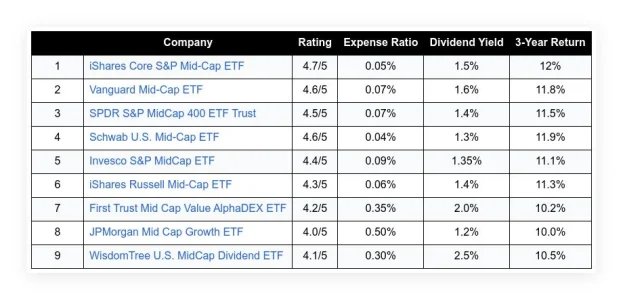If you receive enough money from a lawsuit or other source, you might be able to retire earlier than the typical retirement age. However, to make this work, you must utilize the right financial strategies, plan appropriately, and build a system that can last you the rest of your life.
Table of Contents
ToggleHow Settlements are Taxed
Once you finalize settlement negotiations, you’ll need to understand the tax liability on your settlement. Depending on where you live and the nature of your claim, you may or may not have significant taxes to account for.
Several things are tax-exempt in your settlement, including:
- Any forms of compensation intended to compensate you for medical expenses related to injuries or illnesses in personal injury incidents.
- Any forms of compensation for pain and suffering related to these incidents.
- Any forms of compensation related to mental and emotional trauma stemming from these incidents.
- Any forms of compensation related to loss of quality of life, such as loss of consortium.
However, some things are subject to tax, including:
- Any forms of compensation designed to replace lost wages or benefits, as your wages or benefits would have been taxed anyway.
- Specific forms of compensation for property damage, like repairing or replacing your car or other personal items damaged in an incident.
- Rare, punitive damages are typically imposed on businesses to discourage them from particularly egregious activities.
As you might expect, managing taxes associated with both lump sum and structured settlements can be challenging, so consider working directly with a tax professional to determine your responsibilities.
Your High-Level Financial Management Strategy
As you approach retirement, you’ll need to adopt a high-level financial management strategy. At this point, you don’t need to figure out exactly how many dollars and cents you’re going to invest or where you’re going to invest it, but you should have a big-picture idea of what your retirement will look like.
These are some of the best things to start with:
Expenses
What are your expenses going to be in retirement? Will your house be paid off, or will you continue to pay your mortgage? How much will you spend on essentials like groceries, utilities, and transportation? What kind of lifestyle do you want to live, and how many extra expenses will you incur from it? For example, do you want to take a vacation several times a year, or are you alright with living a frugal, minimalistic lifestyle?
Long-term Changes
Your expense projections will likely be suitable for the first several years of your retirement, but you also need to think about long-term changes that might impact how much you spend. Inflation will undoubtedly be in play, weakening the spending power of your money. Property taxes are going to go up. Certain benefits you’re counting on may or may not be available to you in the future. All the while, you’ll probably have higher medical expenses and different needs.
Risk Allocation
What risks are you willing to tolerate, and how will you allocate risk to your portfolio? Do you want to live with as much stability and predictability as possible, even if it means having a lower income or seeing a lower rate of return? Or are you willing to embrace additional risks in pursuit of higher returns? The younger you are and the more flexible you are, the higher your risk tolerance will be.
After analyzing these factors, you should be able to determine approximately how much income you need to retire. For example, let’s say you’ve calculated your monthly expenses as being $4,000 a month, and you know that some of your expenses will increase in the future. Suppose you plan to have approximately $5,000 a month. In that case, that should leave you safely covered, especially if you’re willing to cut some luxury expenses in the future or if you’re counting on significant benefit changes in the future, such as finishing paying off your mortgage.
From there, you can work backward. If you have a structured settlement, you can immediately compare your projected expenses and income. You can stop here if you need $5,000 a month to be comfortable, and your structured settlement will pay you $5,000 a month.
Potential Challenges
For most retirees, however, matters are significantly more complicated. Your structured settlement may not be enough to cover all your needs, or you may have a lump sum settlement to figure out how to manage.
Under these circumstances, you’ll likely need to invest. But how much money do you need to invest, and how are you supposed to manage it?
The four percent rule is a great place to start. It’s a simplistic heuristic designed to help you estimate how much money you can reasonably withdraw from your investments without ever tapping into your principal. When appropriately allocated, most people can withdraw up to four percent of their principal annually without worrying about outliving their savings.
If you have $5,000 a month of projected expenses, you’ll need $60,000 a year. Applying the four percent rule would require you to have principal investments of $1.5 million.
Assets to Consider Investing In
So, how exactly are you supposed to manage that principal?
Stocks
Stocks are some of the most popular investments since they allow you to invest in major companies and share in the profits. Naturally, some stocks are riskier than others, but broadly speaking, stocks offer a reliably impressive rate of return in exchange for moderate risk. Especially valuable stocks pay dividends, issuing income at regular intervals.
Bonds
Bonds are typically much safer than stocks, but they offer a lower rate of return. Therefore, they’re commonly used to balance out risk in a portfolio.
Real Estate
You can also choose to invest in real estate. Rental properties allow you to generate consistent income in excess of your expenses, though you’ll be responsible for managing them. If you want a more hands-off experience, you can invest in real estate investment trusts, which function more like stocks.
Mutual Funds and ETFs
Mutual funds and exchange-traded funds (ETFs) allow you to invest in many different assets simultaneously. It’s a convenient way of balancing your portfolio that requires minimal decision-making on your part.
Commodities
Some investors also include investments in commodities, such as precious metals. Depending on the commodity, this investment could function as a risk hedge or simply a more broadly diversifying method.
Balancing and Rebalancing Your Portfolio
Over time, you may be interested in rebalancing your portfolio. As your risk tolerance decreases or as your experience as an investor increases, you may want to pull your money out of some assets and invest it in others. Commit to reviewing your portfolio at least once a year, even if you don’t make any changes at that time.
Managing Structured Settlement Payments
If you have structured settlement payments, potentially in combination with other retirement income, these are some strategies that can help you protect yourself in the long term.
Live below your means.
Always make an effort to live below your means. Your retirement income may allow you to spend up to $5,000 a month, but if you strive to live on $4,000 a month, you’ll have much more breathing room. If some of your expenses go up, you won’t have to worry about it. You’ll be afforded even more protection if you use the extra money you save.
Supplement your income.
Along similar lines, you might be interested in supplementing your income while you still can do it. Working a part-time job or picking up a hobby that allows you to make a few extra bucks on the side can go a long way in making your retirement more stable, especially in the future.
Minimizing Your Retirement Expenses to Make Things Work
If you want your retirement to be steady and reliable, you may want to make an effort to minimize your retirement expenses. These are some strategies that can help you:
Downsize
One option is to downsize, moving to a smaller house with fewer maintenance demands and fewer overall expenses.
Move
Moving can also help you save a lot of money. You can move to a cheaper neighborhood where real estate or rent is cheaper, or you can move to an area with more convenient services, like public transportation.
Shop Smart
Shopping more intelligently and with a more scrutinizing eye can also help you save money. Even something simple, like shopping at a cheaper grocery store, can save you upwards of hundreds of dollars a month.
Stay Healthy
Some of the most significant expenses you will face in retirement are healthcare and medical expenses. To keep them to a minimum, you need to stay healthy. Many strategies can help you do this, such as eating a balanced diet, drinking plenty of water, and getting ample physical exercise. Also, take advantage of preventative care.
Take advantage of free hobbies, activities, and resources.
Finally, try to entertain yourself and enrich your life with hobbies, activities, and resources that are free. Not everything needs to be an expense on your ledger.
Winning a massive settlement certainly feels good and may entitle you to retire early. Even a small settlement can accelerate your retirement path or make your retirement more comfortable. But if you want to make the most of your structured or lump sum settlement, it’s important to exercise these strategies and carefully plan for the future.
















